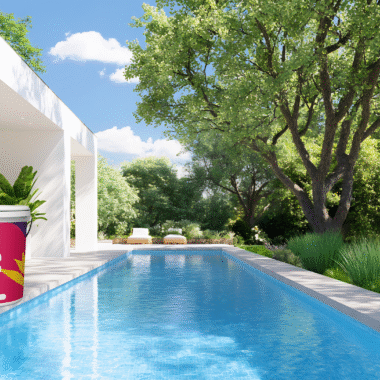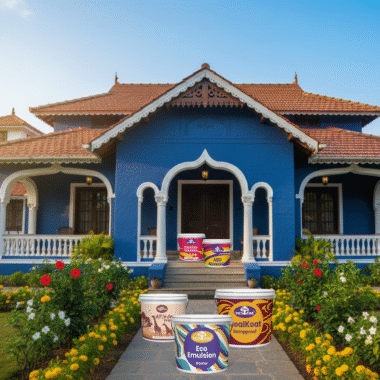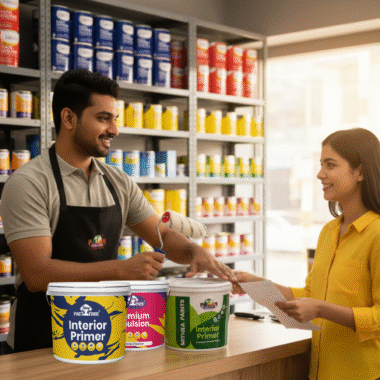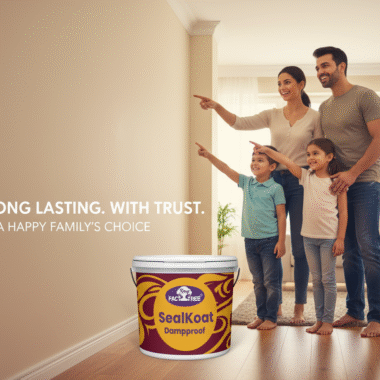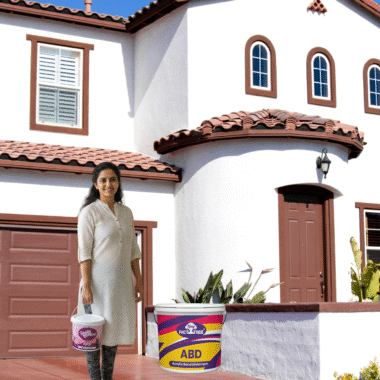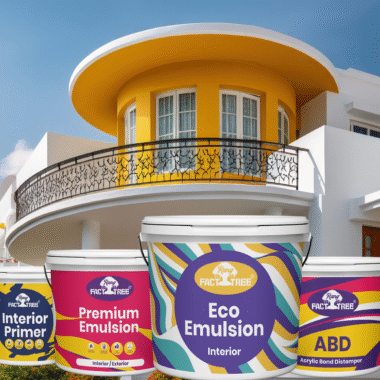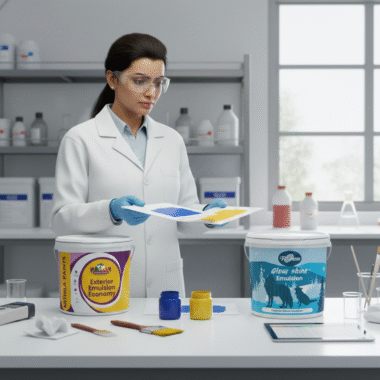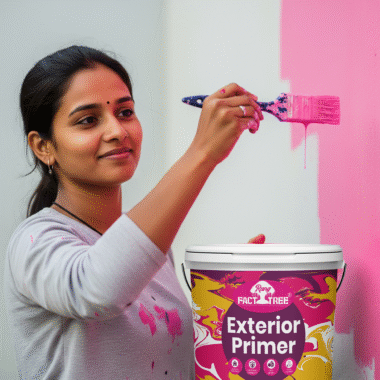Painting a room or tackling an exterior home project can transform your space, but the foundation of a great paint job lies in choosing the right primer. A high-quality primer ensures better paint adhesion, enhances durability, and helps achieve a smooth, professional finish. With so many options available, selecting the best paint primer for your budget can feel overwhelming. This guide will walk you through the essentials of best paint primers, their types, key considerations, and top recommendations to help you shop smart in 2025.
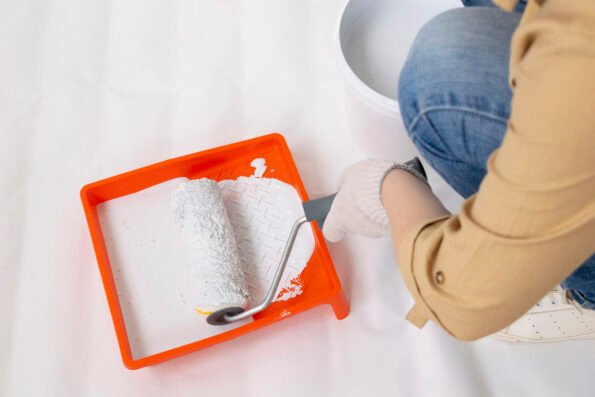
Why Do You Need a Best Paint Primer?
Primers are the unsung heroes of any painting project. They create a uniform surface for paint to adhere to, cover imperfections, and extend the life of your paint job. Skipping primer might save time initially, but it can lead to issues like peeling, cracking, or uneven color. Here’s why primers are essential:
- Improved Adhesion: Primers ensure paint sticks to surfaces like drywall, wood, or metal, especially if they’re glossy or previously painted.
- Stain Blocking: They prevent stains, such as watermarks, smoke, or crayon marks, from bleeding through the topcoat.
- Color Consistency: Primers provide a neutral base, which is crucial when transitioning to lighter colors or covering dark shades.
- Durability: A primed surface resists wear, moisture, and mildew, making your paint job last longer.
- Cost Efficiency: By reducing the number of topcoat layers needed, primers can save you money on paint.
Investing in a quality primer tailored to your project is a smart move for both DIY enthusiasts and professionals.
Types of Best Paint Best Paint Primer
Understanding the different types of primers is key to choosing the right one for your needs. Here are the three main types available in 2025:
1. Latex (Water-Based) Best Paint Primer
Latex primers are popular for their versatility and eco-friendly properties. They’re ideal for:
- New drywall, as they seal porous surfaces and provide a smooth base.
- Interior walls with minor stains or discoloration.
- Projects where quick drying and easy cleanup (with water) are priorities.
Pros: Low volatile organic compounds (VOCs), fast-drying, environmentally friendly, and suitable for most surfaces. Cons: May not block tough stains like smoke or grease as effectively as other types. Best for: New drywall, plaster, and interior projects with minimal staining.
2. Oil-Based (Alkyd)Best Paint Primer
Oil-based primers are known for their superior stain-blocking capabilities and durability. They’re great for:
- Bare wood, as they penetrate porous surfaces and seal tannins.
- Exterior surfaces exposed to harsh weather.
- Surfaces with heavy stains, such as water damage or rust.
Pros: ExcellentPolished Concrete: Excellent stain-blocking, durable, and suitable for both interior and exterior use. Cons: Higher VOCs, longer drying time, and requires solvent cleanup. Best for: Wood, metal, exterior surfaces, and stain-heavy projects.
3. Shellac-Based Best Paint Primer
Shellac primers are the go-to choice for tackling the toughest stains and odors. They’re ideal for:
- Surfaces marred by smoke, water, or mold damage.
- Sealing knots in wood or covering marker and crayon stains.
- Projects requiring quick drying and strong adhesion.
Pros: Exceptional stain and odor blocking, fast-drying, and versatile across surfaces like drywall, wood, and metal. Cons: High VOCs, requires denatured alcohol for cleanup, and can be more expensive. Best for: High-stain or odor-prone surfaces like kitchens or water-damaged areas.
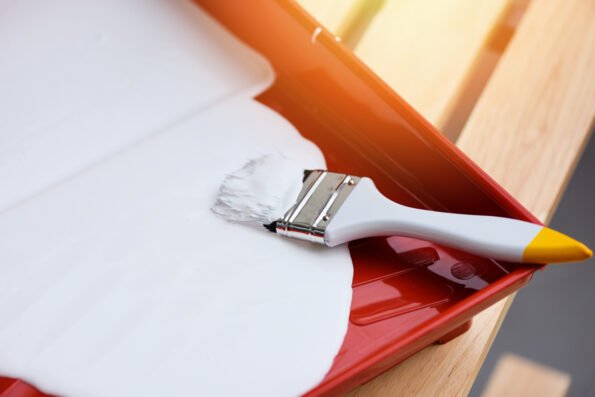
Specialty Primers Best Paint
- Bonding Primers: Designed for slick surfaces like glass, tile, or glossy paint, ensuring strong paint adhesion .
- Mold/Mildew-Resistant Primers: Contain additives to prevent mold growth, ideal for damp areas like bathrooms.
- Mist Coats: A diluted emulsion paint used as a primer for fresh plaster, allowing moisture to escape while sealing the surface.
Key Factors to Consider When Choosing a Primer Best Paint
To shop smart and stay within your budget, consider these factors when selecting a primer:
- Surface Type: Identify the material you’re painting—drywall, wood, metal, or plaster. Each requires a specific primer for optimal adhesion and coverage.
- Condition of the Surface: New, unpainted surfaces often need a primer to seal porosity, while previously painted surfaces in good condition may not.
- Stain and Odor Challenges: For tough stains or odors, opt for oil-based or shellac primers. For minor issues, latex primers may suffice.
- Interior vs. Exterior: Exterior primers must withstand weather, making oil-based or specialty exterior primers better choices.
- Paint Type Compatibility: Ensure the primer works with your topcoat (latex or oil-based). Most primers are versatile, but check manufacturer guidelines.
- Budget: Balance cost with performance. Budget-friendly options like Kilz 2 can perform well for simple projects, while premium primers like Benjamin Moore Fresh Start offer advanced features for complex jobs.
- Drying Time and Application: Latex primers dry faster (1-2 hours), while oil-based and shellac primers may take longer. Consider your project timeline and application method (brush, roller, or sprayer).
- Environmental Impact: Low-VOC options like latex primers are better for indoor use and eco-conscious buyers.
Budget-Friendly Tips for Choosing a Best Paint Primer
- Opt for Paint-and-Primer Combos: Products like Behr Marquee or Benjamin Moore’s self-priming paints can save time and money for surfaces in good condition. These combine primer and paint, reducing the need for a separate primer.
- Buy in Bulk: Purchasing a gallon instead of quarts can lower the cost per square foot, especially for larger projects.
- Shop Sales: Retailers like Home Depot and Amazon often offer discounts on primers, especially during seasonal sales.
- Use Less for Small Projects: For spot priming or small areas, consider spray primers like Rust-Oleum Zinsser for cost-effective coverage.
- Check Compatibility: Avoid wasting money by ensuring your primer matches your topcoat and surface to prevent reapplication.
How to Apply Best Paint Primer for Best Results
Proper application maximizes a primer’s effectiveness:
- Prepare the Surface: Sand, scrape, or clean the surface to remove loose paint, dust, or grease. For previously painted surfaces, test with isopropyl alcohol to determine if it’s acrylic or alkyd-based paint.
- Choose the Right Tools: Use brushes for small areas, rollers for walls, or sprayers for even coverage on large surfaces.
- Apply Evenly: Avoid heavy or uneven coats, especially with latex primers, to ensure consistent color in the topcoat.
- Allow Proper Drying Time: Follow manufacturer guidelines for drying (1-2 hours for latex, longer for oil-based or shellac).
- Check Coverage: Apply a second coat if stains or dark colors still show through.

Common Mistakes to Avoid for Best Paint Primer
- Skipping Surface Prep: Failing to clean or sand can lead to poor adhesion and peeling.
- Using the Wrong Primer: Mismatched primers (e.g., oil-based on drywall) can cause uneven finishes or raised grain.
- Ignoring VOCs: High-VOC primers like shellac require ventilation, especially indoors.
- Overlooking Manufacturer Instructions: Always check compatibility with your topcoat to avoid adhesion issues.
Conclusion
Choosing the best paint primer for your budget in 2025 doesn’t have to be daunting. By understanding your project’s needs—surface type, stain challenges, and interior vs. exterior use—you can select a primer that ensures a durable, professional finish. With the right primer, your paint job will not only look better but last longer, saving you time and money in the long run.



